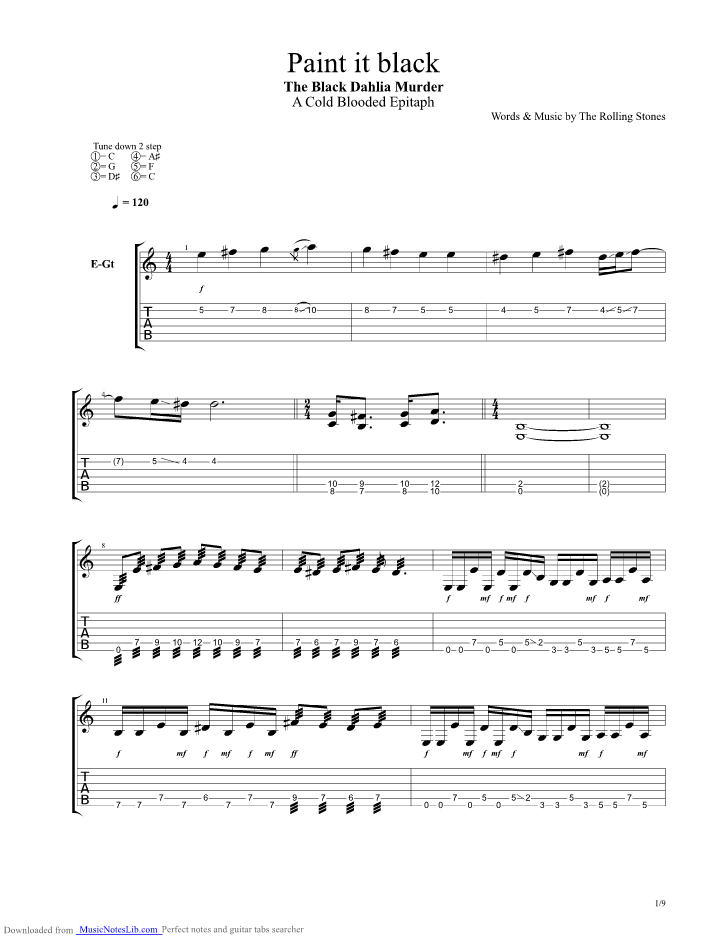


This gives us a pretty smooth representation of even high frequencies – the higher the frequency we want to measure accurately, the higher the sampling rate required.Īliasing: the grey waveform is the original the purple is the digital version. CD-quality audio is at a sampling rate of 44.1kHz, meaning that the audio signal is sampled a whopping 44,100 times per second. The number of samples taken per second is called the sampling rate. The higher the frequency at which the signal is referenced – or ‘sampled’ – and the greater the precision of the value that’s recorded, the closer to the original waveform the digital recording will be (see Fig. It starts with the process of analogue-to-digital conversion (ADC), which involves measuring the value of the continuous signal at regular intervals and creating a facsimile of the original waveform.
#PAINT IT BLACK BASS TAB CODE#
The answer is a method called pulse code modulation (PCM), which is the main system employed when working with digital audio information. So, how do computers turn a smooth waveform of infinite resolution into a series of numbers that they can understand? Quantization: the smooth sine curve is the original analogue waveform the squared version is the quantized digital waveform (Image credit: Future) By the numbersĬomputers are, for the most part, digital, which means they read and write information as discrete values – that is, a string of numbers.


 0 kommentar(er)
0 kommentar(er)
